Write your family’s migration story: some ideas to get you started (part 1)
By Stephanie Ryan, Research Librarian | 21 July 2022
One aspect of family history which fascinates most of us is the change from an existence with limited possibilities, to a life in Australia with life-changing opportunities. If we return to our family’s country of origin, it is often a culture shock when we realise the enormous changes our family had to undertake. What pushed them out of their home country? Why did they come to a country so far away with little possibility of seeing family and friends again? How did they negotiate this challenging migration path full of the unexpected?
Push factors in migration
This well distributed 19th Century image, of huddled poverty transformed into plenty, was a powerful visual message to emigrate, especially for those with limited literacy and poor circumstances.
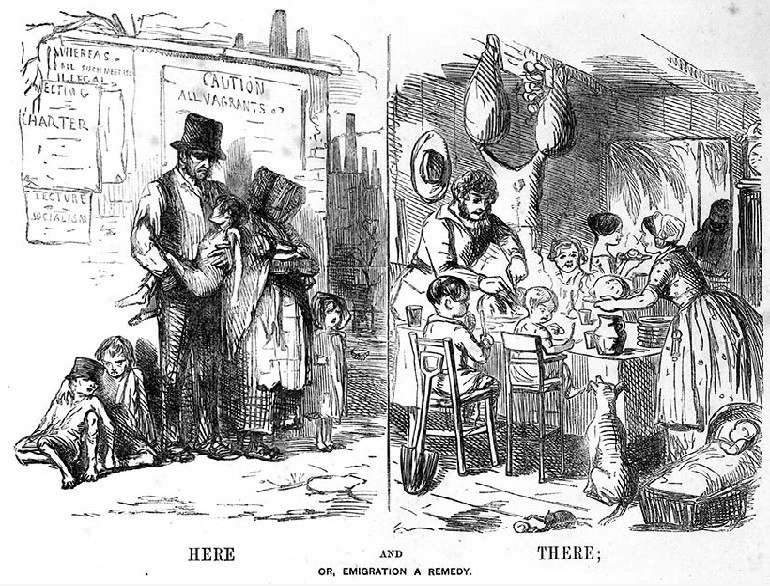
Punch :Here and there; or, emigration a remedy. London, 8 July 1848.. Punch. (London). Ref: PUBL-0043-1848-15. Alexander Turnbull Library, Wellington, New Zealand. /records/23241802
Find out about conditions in the time and place from where and when your family came. The following keyword searchable newspaper archives at State Library may help. Access is free for State Library members.
- British Library newspapers - includes 48 titles (onsite and offsite access)
- British newspaper archive - covers over 200 titles from the British Isles (onsite access only)
- Irish newspaper archive - has a mix of out-of-print and current titles (onsite and offsite access)
Remember to also try Trove historical newspapers, which provides Australia-wide newspapers up to 1954, some later.
Pull factors in migration
Immigration agents advertised enticing migration aspects at meetings and in print. The following conditions for Queensland were widely advertised in the British Isles, and these boosted arrivals. What would have attracted your family? Note the ease of transport, attention to immediate needs of board and lodging, conditions for land acquisition and farming. The ship-kit is referred to a couple of times. Find out more about the ship-kit in our previous blog 19th Century Queensland immigrant’s ship-kit.
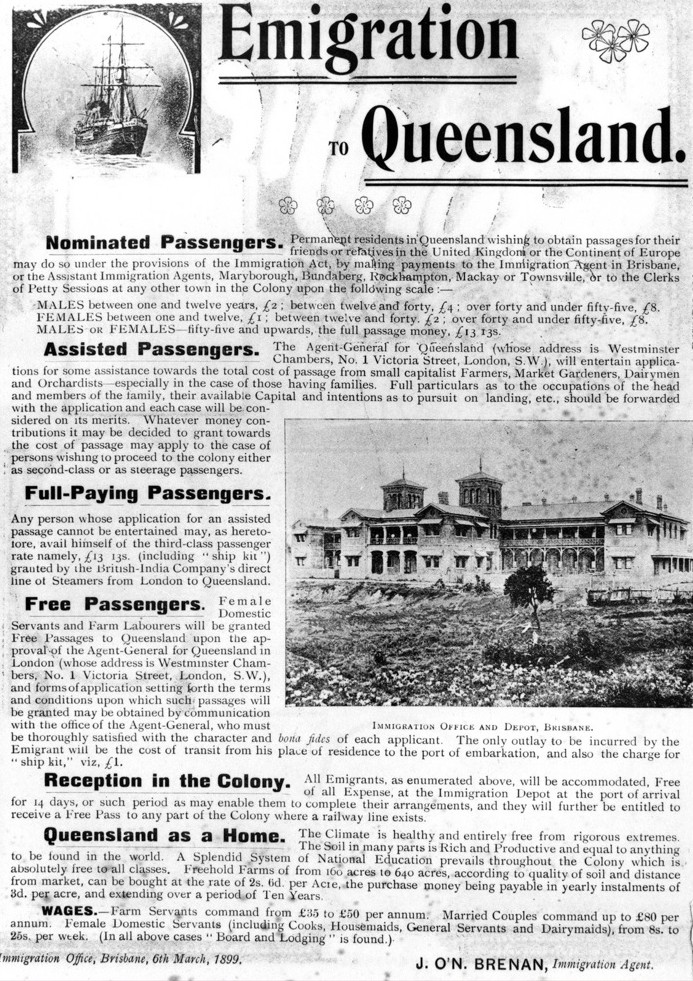
Emigration to Queensland – a broadsheet poster designed to attract migrants, 1889. State Library of Queensland. Negative: 33798.
Conditions for passage varied over time and you can read more about this in Nineteenth century government assisted immigrants from the United Kingdom to Australia : schemes, regulations and arrivals, 1831-1900 and some vital statistics 1834-1860, by Robin F. Haines. Click on the author’s name in the catalogue record to discover her other books on the migrant journey.
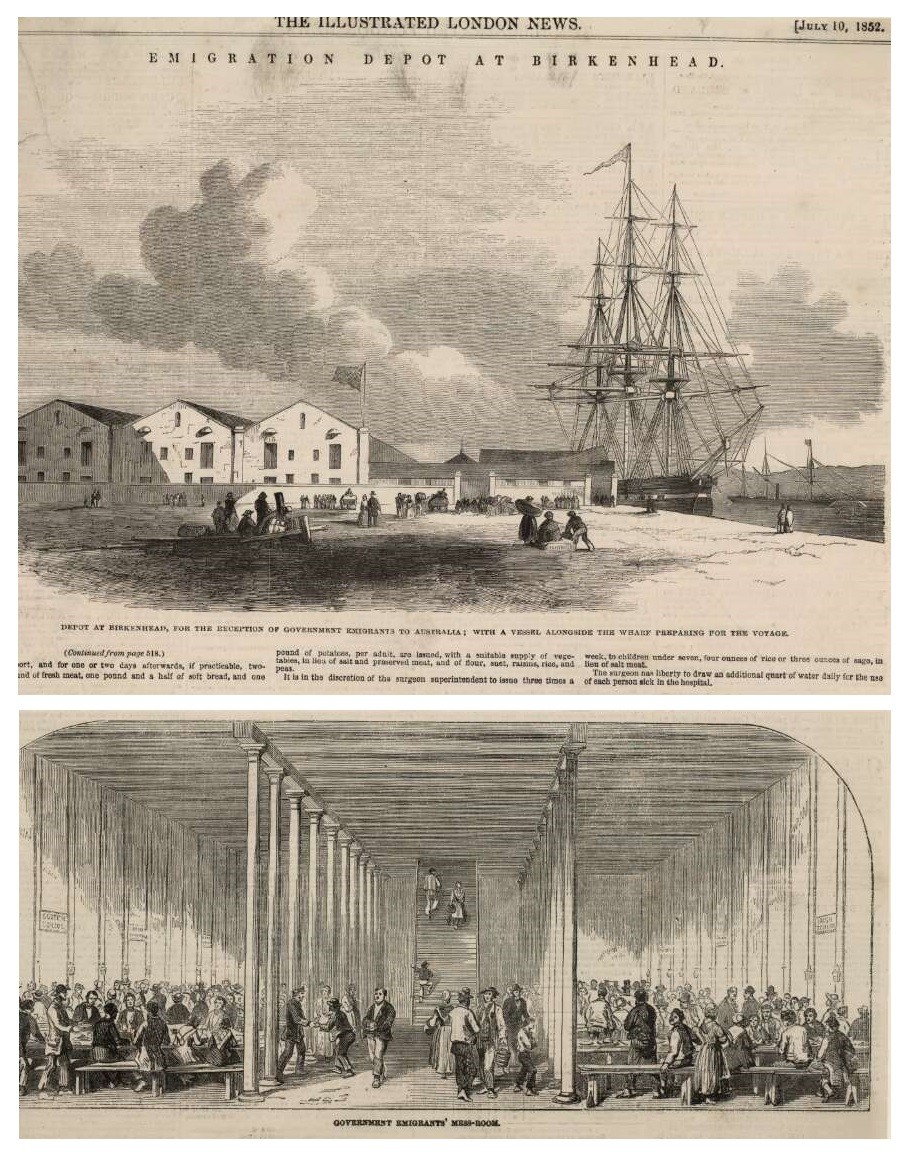
McMinn, W. K. (1852). Emigration depot at Birkenhead.
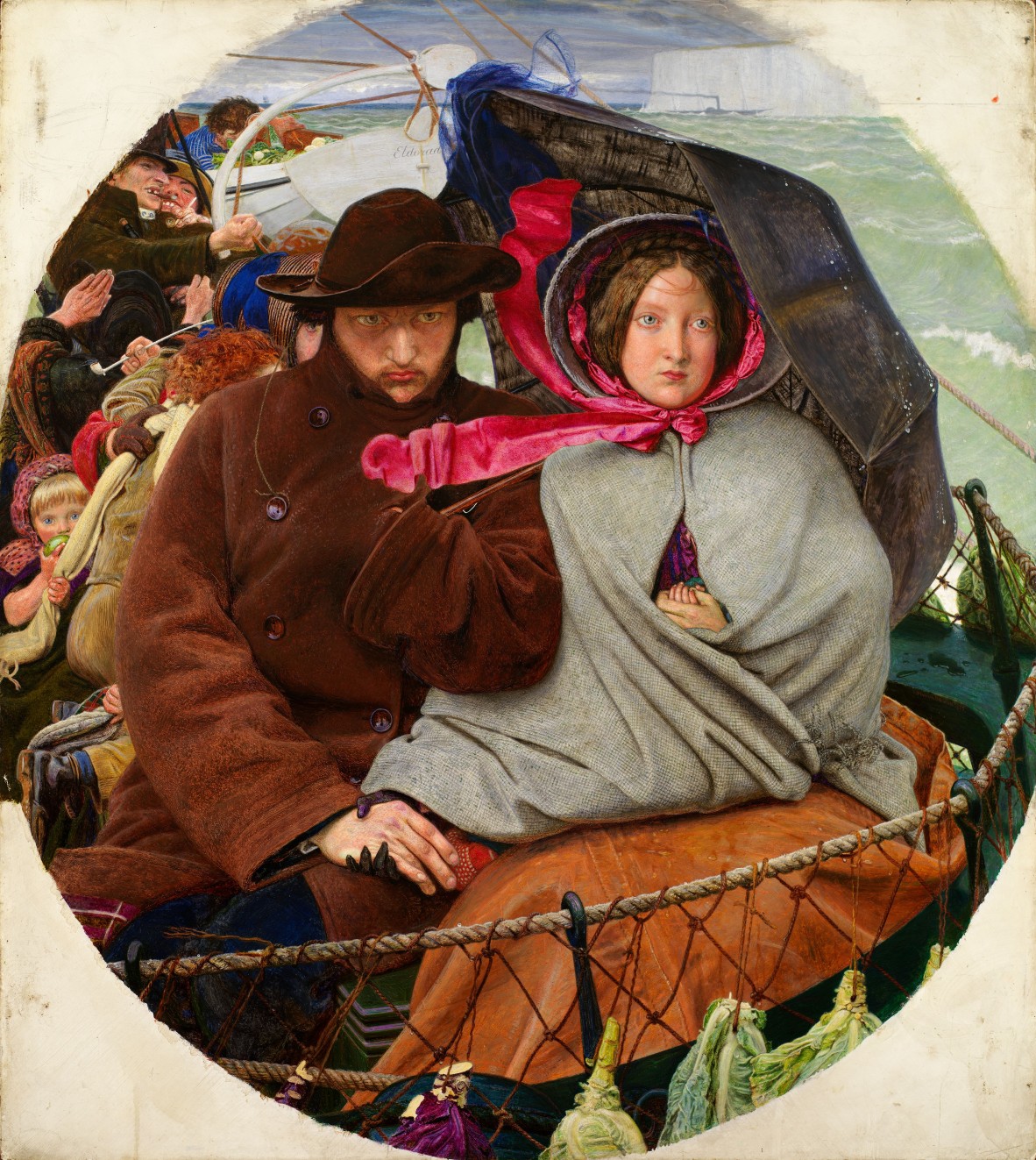
The Last of England, Ford Madox Brown. Public domain, via Wikimedia Commons.
Note the child’s hand through the shawl. Taking children on such a journey could be hazardous.
Coming to Queensland as a migrant was a relatively safe proposition because the government was investing a lot of money to get thousands of people around the world to develop the State. They had a stake in ensuring the venture was a success. Years of dealing with convicts and migrants meant there were well established procedures. This ensured migrants’ transport to the vessel, and their health was reasonably protected with adequate food and space; a surgeon-superintendent could attend to medical needs. It was safer to take the long trip to Australia than to take the much shorter one to North America where private agents were involved and there was little government supervision.
The immigrant ships
The Queensland Government had contracts with the Blackball Line in the 1860s and the BISN Line in the 1880s. Both had significant fleets. There were lots of other ships bringing settlers to Queensland.
Find out about these extraordinary enterprises and the ships involved
- Fast passage to Australia : the history of the Black Ball, Eagle and White Star Lines of Australian packets
- The passage makers
- B.I. the British India Steam Navigation Company Limited - covers the 1880s’ arrangement which saw the ships coming every few weeks via the Suez Canal and down the east coast of Queensland.
Find pictures of immigrant ships
- in One Search, use the ship’s name and the word ship, and select ‘SLQ digital collections’ from the options.
- in Trove, use the Images, Maps & Aretfacts option to locate a wider selection of images
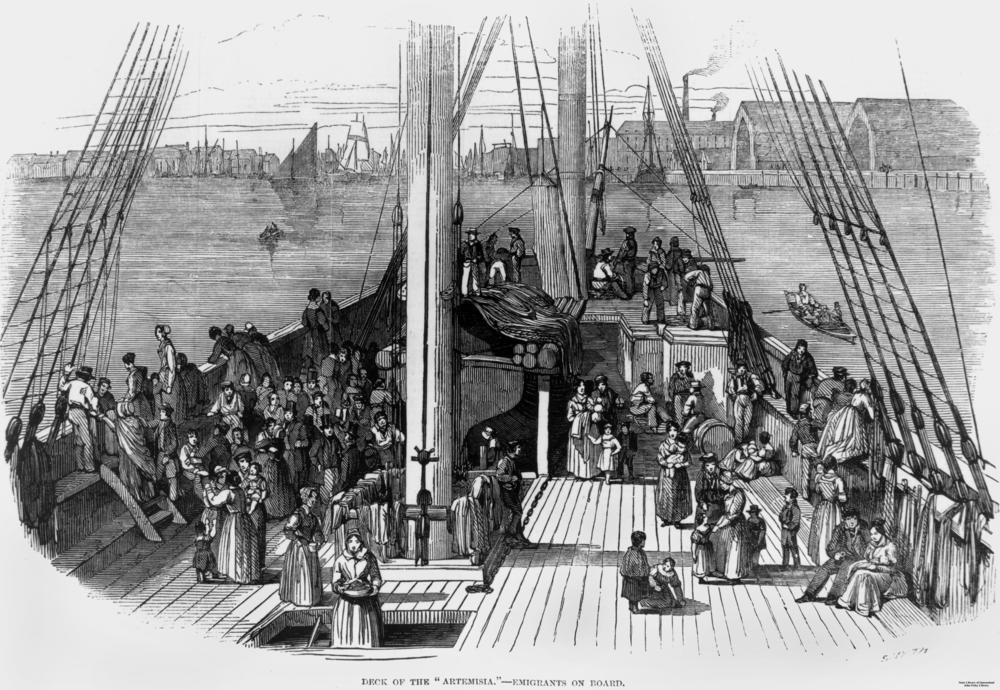
The Artemisia, the first ship to bring immigrants direct to Moreton Bay in December 1848.
Read the next instalment to this blog - Write your family’s migration story - find out about your ancestor’s ship and voyage (part 2)
August is Family History Month
Get involved in our Family History Month activities.
- Book into our free webinar Familienforschung: Researching your German family history.
- Visit State Library during the month of August to see our collection display, and get expert help with your family history research
- Share your story with us. State Library would like to hear your stories of discovery and share them as an inspiration for others during Family History Month 2022.
- Have fun exploring our family history month page, with access to resources, research guides and blogs
More information
State Library membership - /get-involved/become-member
Ask us - /plan-my-visit/services/ask-us
Family history - /research-collections/family-history
Comments
Your email address will not be published.
We welcome relevant, respectful comments.